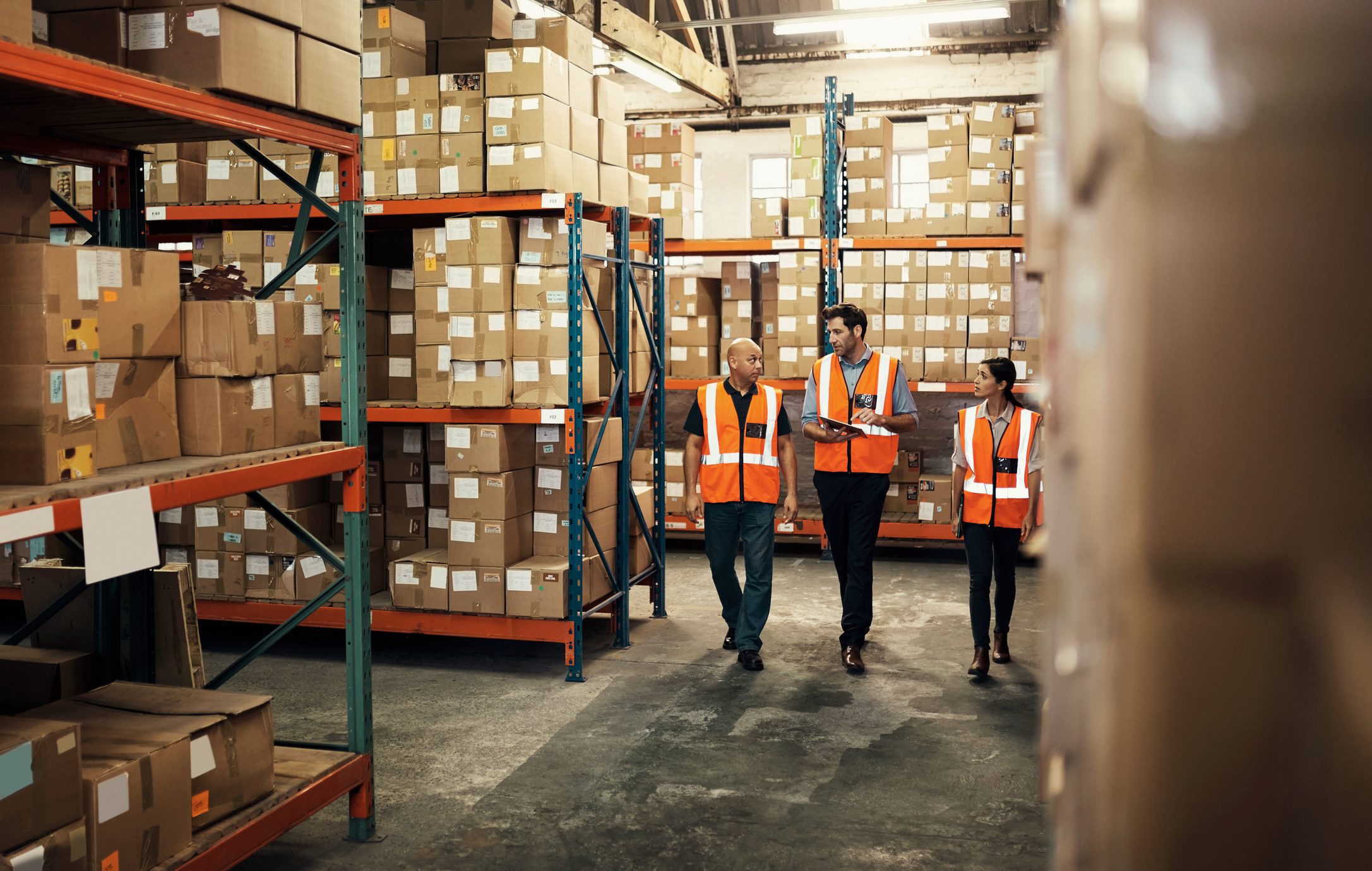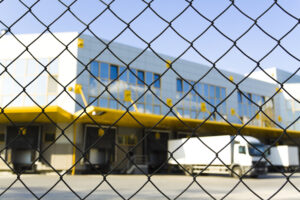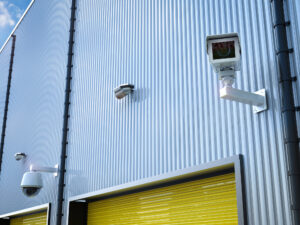
Essential warehouse security measures to protect your inventory
As the backbone of supply chain management, warehouses play a crucial role in storing, managing, and distributing goods across various industries. Given the increasing threats faced by warehouses today, prioritizing warehouse security has never been more essential. In this blog, we’ll explore key security measures, from risk assessments to advanced surveillance technologies, to help you safeguard your warehouse operations and maintain business continuity.
Why warehouse security is critical for businesses
Poor security can lead to significant financial losses due to theft, damage, and disruptions in your supply chain. It not only affects your bottom line but can also jeopardize customer trust and operational efficiency. Whether from internal oversights or external attacks, the consequences of a security breach can be devastating.
Common security threats in warehouses
- Break-ins: Poorly maintained entry points and insufficient perimeter security can invite intruders and increase the risk of robbery.
- Vandalism: Acts of deliberate damage—such as graffiti or broken windows—disrupt operations, carry unforeseen expenses, and further weaken overall security.
- Internal risks: Work-related injuries or employee theft can pose significant challenges, leading to financial losses and a decline in workplace morale if not properly addressed.
Assessing warehouse security risks
Internal vs. external security threats
A thorough risk assessment distinguishes between internal threats (such as employee theft or operational errors) and external threats (like trespassing or targeted warehouse break-ins). Recognizing these differences is essential to tailor your security measures effectively.
Keep in mind your warehouse layout
Every warehouse is unique, with layouts that may expose hidden vulnerabilities. Consider the following before evaluating what warehouse security system is best for you:
- Flow of goods
- Placement of valuable inventory
- Entry and exit points
Perimeter security: your first line of defense
Robust perimeter security starts with physical barriers that prevent unauthorized entry and deter potential intruders.
High-quality fencing: Steel and aluminum fencing offer strength and longevity, while welded wire mesh and palisade fencing provide superior resistance against cutting and climbing. Adding features like razor wire, motion sensors, and CCTV integration can further bolster security.

Reinforced gates: Reinforced gates should be constructed from heavy-duty materials like steel or aluminum, with internal reinforcements to resist forced entry. Options such as automated locking mechanisms, anti-ram barriers, and access control systems (keypads, biometrics, or RFID) further enhance security. Additionally, gates should integrate seamlessly with fencing to eliminate gaps or weak points that intruders could exploit.
Surveillance and motion sensors: Integrating perimeter surveillance with motion sensors enhances your security by detecting unusual activity around your facility. Combined with real-time alerts, these technologies allow for prompt responses to potential threats, reducing the risk of intrusion.
Warehouse surveillance: how CCTV and monitoring deter crime
Modern warehouse CCTV systems offer comprehensive monitoring that can prevent a crime from ever happening in the first place. Visible cameras signal to potential criminals that they are being watched, and the possibility of being identified can be enough to steer them away from your property.

Video recording of an incident is one of the most reliable forms of evidence since showing a crime in progress or an individual at the scene offers strong visual proof. Having cameras shows that you are equipped to provide clear documentation that can help with investigations and legal proceedings. Whether it’s to discourage trespassers from targeting your property or garner corroboration after a crime has been committed, cameras can support your security efforts from both angles.
Larger spaces, like warehouses, could benefit from having professional monitoring for their video surveillance system. With dedicated security personnel, real-time threats can be detected and addressed immediately, preventing potential losses or damage.
The role of security guards in warehouse protection
A dedicated warehouse security guard is integral to a proactive security strategy. Guards patrol the area and respond to suspicious behavior, acting as both a deterrent and a first responder. Their responsibilities include:
- Monitoring entry points
- Managing on-site incidents
- Maintaining constant vigilance over the premises
When to hire on-site security vs. remote monitoring
Deciding between on-site security and remote monitoring depends on your warehouse size, risk profile, and operational needs. A combination of both might offer the best protection for larger facilities or high-risk areas. Balancing human oversight with technological solutions can help you address gaps that technology alone might not suffice.
Warehouse security technology: smart solutions for protection
The landscape of warehouse security has been transformed by technological advancements, which now provide real-time alerts and automated control systems. These cutting-edge solutions can seamlessly integrate with existing infrastructure, creating a comprehensive security network tailored to your needs. Let’s explore some of the most prevalent smart security products that are revolutionizing warehouse safety.
- Alarm systems: Today’s modern alarm systems empower users with mobile apps that enable them to arm, disarm, and monitor their security settings from anywhere. This level of control not only enhances security but also provides peace of mind, allowing you to respond promptly to any potential threats.
- AI-powered cameras: Cameras equipped with artificial intelligence analyze real-time data to identify patterns and differentiate between genuine human activity and non-threatening movements, such as branches swaying in the wind. This advanced capability minimizes false alarms and ensures that security personnel can focus on actual threats.
- Automated door locks: Advanced locking mechanisms can be managed remotely, offering flexibility and security. These automated systems can restrict access to authorized personnel only, significantly reducing the risk of unauthorized entry.
Warehouse security regulations & compliance
Keeping up with warehouse security regulations ensures that your security measures are robust, effective, and recognized by industry standards. Regular audits and updates to your security protocol are essential for compliance.
OSHA warehouse safety and security guidelines
Adhering to OSHA warehouse regulations is critical in maintaining a safe work environment. These guidelines cover both safety and security aspects, ensuring that employees are protected from potential hazards and that the facility is safeguarded against security breaches. Implementing OSHA recommendations helps mitigate liability and enhances overall security.
Best practices for implementing a warehouse security plan
Create a security checklist
A detailed security checklist is a practical tool to ensure that all aspects of your warehouse security are addressed. Regularly updating the checklist based on evolving threats and technological advancements will keep your security measures relevant and effective.
- Assess potential risks
- Secure entry and exit points
- Strengthen security system with video surveillance, monitoring, access control, and smart technology
- Improve lighting and visibility so all pathways, parking, and vulnerable areas are well-lit
- Develop an emergency plan and train employees on protocol
- Regularly review and update security measures
Employee training and security protocols
Training employees on security protocols is essential. Regular drills, clear communication channels, and a thorough understanding of emergency procedures empower staff to act swiftly in case of an incident. Educating your team fosters a proactive security culture within the organization.
Choosing the right warehouse security provider
Selecting a reliable security provider involves assessing their expertise, technology offerings, and responsiveness. Look for a partner that not only provides robust warehouse surveillance solutions but also understands the unique challenges of warehouse security. Certifications, client testimonials, and a proven track record are key indicators of quality service.
By adopting these essential warehouse security measures, businesses can protect their inventory, ensure regulatory compliance, and create a secure environment for both employees and assets. Embracing a proactive and comprehensive security strategy is key to staying ahead in today’s ever-evolving threat landscape.

